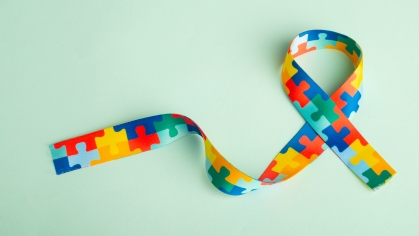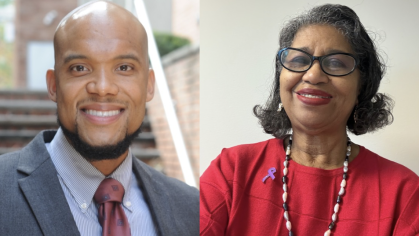
Associate Professor Lenna Nepomnyaschy discusses Poverty Awareness Month and explains what social workers, and the greater community, can do to address poverty.
What are important statistics to pay attention to related to poverty in America?
Today, approximately 12% of all Americans (38 million people) and 17% of children (12 million children) live in households with incomes below the poverty threshold. But, these overall rates mask large differences across racial and ethnic groups. Over one-quarter of Native American, 31% of African American, and 23% of Latino children live in poverty. Another important point to consider is that the poverty threshold, regardless of where people reside, is about $27,000 for a family of four, which is certainly low considering the very high costs of housing, education, and medical care. Because this poverty threshold is so low, poverty scholars and advocates often talk about a low-income threshold, which is twice the poverty rate, or approximately $54,000 for a family of four. Nearly 40% of all children in the US and 57%, 55%, and 50% of African American, Native American, and Latino American children, respectively, live in low-income families. And a final key piece of information to consider is that the US has some of the highest overall and child poverty rates among wealthy nations, with rates double or triple that of Scandinavian and Western European countries.
Why does the United States have such high poverty rates?
First, as many people know, the federal minimum wage in the US is $7.25 per hour and has not been changed since 2009. At this wage, there is no place in the US where a person working full-time full-year can afford a one-bedroom apartment. Of course, there are large differences by state, 29 states and DC have raised their minimum wage above the federal line, with rates nearly double the federal in CA, WA, NY & NJ. On the other hand, 16 states have stayed with the federal minimum wage and 5 states that have no established minimum wage.
But, wages are only one piece of the answer. When poverty rates are compared across countries based on families’ market incomes (what people earn), before considering anything that the government spends (benefits) or takes (taxes), our poverty rates are no higher than other countries. However, when we look at poverty rates after government benefits and taxes are applied, our poverty rates are much higher. Thus, the reason that the US has such high poverty rates is the weakness of the US social safety net and our highly regressive tax system. Specifically, all of these other wealthy countries provide child allowances, universal health care, paid family leave, sick leave, and universal child-care. These are the benefits that allow families, even those with low wages, to rise well above the poverty thresholds.
What are some resources students, faculty, and staff can use to learn more about poverty in America?
There are a number of organizations at the federal level and in NJ that are engaged in research and advocacy around these issues. At the national level, great resources for understanding the issues and getting the most updated data and statistics include the Center on Budget & Policy Priorities, the Center for American Progress, as well poverty centers at universities, including the Institute for Research on Poverty at the University of Wisconsin-Madison and the Center for Poverty and Social Policy at Columbia University.
In New Jersey, New Jersey Policy Perspectives provides excellent data on these issues and is heavily involved in advocacy and engagement with policymakers, as well as New Jersey Citizen Action, which has merged with NJ Anti-Poverty Network.
Finally, make sure to look at two Rutgers School of Social Work MSW courses that are at the forefront of these issues, Poverty, Inequality, Discrimination & Public Policy (19:919:544) and Advanced Contemporary Policy (ACP): Economic Justice for Families & Communities (19:910: 585)
How can social workers, and the greater community, address poverty?
The first thing to do is to become aware of these issues and to raise awareness among our friends, families, and colleagues. It is important to get accurate information about these topics, because there are many myths, stereotypes, and fallacies stemming from racism, sexism, and xenophobia that have been adopted by politicians, the media, and some in the public that aim to divide us and to create an us versus them mentality. But, these are issues that affect all of us, as new research suggests that over 60% of all Americans will experience poverty at some point, and so we should all be in this fight together.
Working for social change to improve the lives of those who are vulnerable, oppressed, and living in poverty is a core tenet of the social work profession. Thus, advocating and fighting for policies that address racism, discrimination, low wages, poverty, and lack of access to healthy food, affordable and stable housing, sick leave, parental leave, and universal high-quality education and health care are things that we should all be doing. And because the enactment of such policies is inherently a political process, social workers must vote, advocate, and fight for policies that expand voting rights and increase access to participation in the democratic process for all Americans. Now is the time to contact your local, state, and federal representatives to let them know how important it is to enact legislation that all the evidence points to will substantially reduce poverty and improve the well-being of all Americans. Remember that this November 7, 2023 election day, the NJ legislature, the State Assembly and the State Senate, are up for reelection. Make sure to investigate who is running in your district and what they believe in and then VOTE.
This story was created in partnership with Rutgers School of Social Work's Inclusion, Intersectionality, Diversity, Equity, and Advancement (IIDEA) Committee in support of our commitment to diversity, equity, and inclusion.



